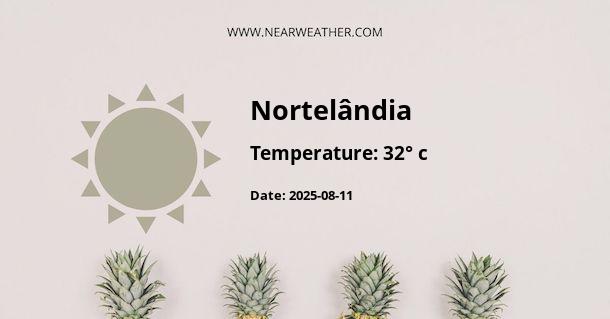Climate and Weather in Nortelandia, Brazil
Nortelandia, a municipality located in the state of Mato Grosso, Brazil, experiences a tropical savanna climate, also known as a tropical wet and dry climate. This type of climate is characterized by distinct wet and dry seasons, with warm to hot temperatures throughout the year. Understanding the climate and weather patterns in Nortelandia is essential for residents, tourists, and businesses operating in the region.
Annual Temperature and Precipitation Overview
The average annual temperature in Nortelandia is around 25°C (77°F), with variations throughout the year. The hottest months are typically from September to October, with temperatures reaching around 32°C (89.6°F). The coolest period occurs between May and July, with temperatures dropping to approximately 21°C (69.8°F).
Nortelandia experiences distinct wet and dry seasons. The wet season extends from October to March, with the peak of rainfall occurring from December to February. During this period, the region receives an average of 150-200mm of precipitation per month. Conversely, the dry season lasts from April to September, with significantly lower rainfall amounts, often below 50mm per month.
Seasonal Weather Patterns
Understanding the seasonal weather patterns can provide valuable insights for planning various activities in Nortelandia. During the wet season, the region experiences frequent rainfall, with occasional thunderstorms. The high humidity during this period contributes to lush vegetation and flourishing agricultural activities in the surrounding areas.
Conversely, the dry season brings drier and sunnier weather to Nortelandia. The decrease in precipitation allows for outdoor activities, agricultural harvests, and overall more stable weather conditions. However, the drier weather also increases the risk of wildfires and drought-related challenges for local ecosystems and farming practices.
Climate Resilience and Adaptation
The climate of Nortelandia presents both opportunities and challenges for the local community and economy. Agriculture, including the cultivation of soybeans, maize, and cotton, is a crucial sector in Nortelandia. Understanding the climate patterns and implementing resilient agricultural practices, such as water management and diversified cropping systems, are essential for the sustainability of the region's agricultural activities.
Furthermore, the tourism sector in Nortelandia can benefit from promoting different activities based on the seasonal weather variations. Highlighting eco-tourism during the lush greenery of the wet season and outdoor adventure activities during the drier months can attract diverse visitors throughout the year.
Understanding Microclimates
While Nortelandia has a predominant tropical savanna climate, it's important to note that microclimates may exist within the region. Factors such as elevation, proximity to water bodies, and land use can influence local weather patterns. For instance, areas closer to rivers or lakes may experience slightly different temperature and precipitation patterns compared to more inland locations.
Conclusion
In conclusion, Nortelandia, Brazil, boasts a tropical savanna climate with distinct wet and dry seasons. The average annual temperature of 25°C (77°F) and significant variations in rainfall throughout the year shape the region's weather patterns. Understanding the climate and weather fluctuations is vital for various sectors, including agriculture, tourism, and overall community resilience. By embracing climate-resilient practices and leveraging the unique seasonal characteristics, Nortelandia can thrive in the face of its dynamic climate.
A - Nortelândia's Latitude is -14.454720 & Longitude is -56.802780.
A - Weather in Nortelândia is 26° today.
A - Climate Conditions in Nortelândia shows overcast clouds today.
A - Humidity in Nortelândia is 86% today.
A - Wind speed in Nortelândia is 6.77 km/h, flowing at 10° wind direction. today.
